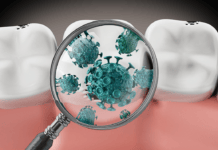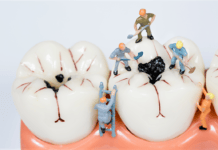Test Your Sharpen-Free Instrument Knowledge!
Disclosure: This quiz is sponsored content from Planmeca as part of our sponsored partner program.
Now let's test your sharpen-free instrument knowledge!
Traditional stainless-steel dental hygiene instruments show significant dullness after how many working strokes?
After only 15 working strokes, curettes display significant dullness, including edge deformation with bevels. This indicates sharpening is required at shorter intervals that will take extra time. Furthermore, traditional stainless steel instruments should be replaced every 9-18 months to ensure functionality as well as comfort for both the clinician and the patient.
Tal, H., Panno, J.M., Vaidyanathan, T.K. Scanning Electron Microscope Evaluation of Wear of Dental Curettes during Standardized Root Planing. J Periodontol. 1985 Sep; 56(9): 532-6. doi: 10.1902/jop.1985.56.9.532. PMID: 3897505.
Physical vapor deposition (PVD) is a technique utilized in medicine for medical devices to extend the life of the equipment and is now being utilized for dental instruments. This technology can modify the surface properties without changing biomechanical properties.
Physical vapor deposition has been used to extend the life of medical devices and equipment. Recently this technology has been utilized in the production of dental instruments to extend the life of the instrument. PVD uses a physical process to produce a vapor that is deposited on the object/device/instrument. It provides a dense, uniform layer that has excellent corrosion resistance, hardness, and good biocompatibility.
Geyao, L., Yang, D., Wanglin, C., Chengyong, W. Development and Application of Physical Vapor Deposited Coatings for Medical Devices: A Review. Procedia CIRP. 2020; 89: 250–262. doi:10.1016/j.procir.2020.05.149.
Physical vapor deposition with Diamond-like Carbon reduces the wear of dental curettes by up to:
Diamond-like carbon deposited to stainless steel with a hardness of 57 on the Rockwell scale decreases wear by 67%. However, when applied to a harder base material with a hardness of 65, DLC reduced wear by 82% when compared to non-coated instruments. LM Sharp Diamond instruments use a harder base material in conjunction with physical vapor deposition of DLC, which contributes to the instrument's ability to remove calculus without fracturing or burnishing and reduces wear by 82%. Hardness is directly related to the durability of the instrument. In addition, the sharpen-free tips with DLC micro coating are proven to maintain long-lasting and superior sharpness.
Leppäniemi J., Lyytinene, J., Elomaa, O. et al. The Influence of PVD Coatings on the Wear Performance of Steel Dental Curettes. Key Engineering Materials. 2016; 674: 289-295. Retrieved from https://www.scientific.net/KEM.674.289
Silicone instrument handles and sharp cutting edges on scalers and curettes have been shown to:
A pilot study was conducted to investigate and compare the effects of stainless steel and silicone instrument handles on hand comfort and strength. The study concluded that silicone instrument handles reduced hand fatigue, improved grip strength, pinch strength, and hand comfort. Additionally, sharp cutting edges contribute to reduced fatigue, more control, less lateral pressure, and efficient deposit removal. The combination of both reduces musculoskeletal disorders.
Hayes, M.J. The Effect of Stainless Steel and Silicone Instruments on Hand Comfort and Strength: A Pilot Study. Journal of Dental Hygiene. 2017; 91(2): 40–44. Retrieved from https://jdh.adha.org/content/91/2/40
Hessheimer, H.M., Payne, J.B., Shaw, L.E., et al. A Comparison of Efficiency and Material Wear of Diamond-plated versus Ceramic Sharpening Stones. Journal of Dental Hygiene. 2017; 91(5): 64–67. Retrieved from https://jdh.adha.org/content/91/5/64
Reducing the size of an instrument through repeated sharpening decreases the strength and integrity of the instrument.
Scaling instruments that have been reduced through sharpening by 20% or more are at risk of fracturing. Bending may also occur in instruments with reduced size. Instrument fracture occurs most commonly when the tip of an instrument is caught in a tight area, for example, close roots or furcations.
Murray, G.H., Lubow, R.M., Mayhew, R.B., et al. The Effects of Two Sharpening Methods on the Strength of a Periodontal Scaling Instrument. Journal of Periodontology. 1984; 55(7): 410–413. https://doi.org/10.1902/jop.1984.55.7.410
Advantages of sharp instruments include which of the following:
There are many advantages of sharp instruments. Some of which are sharp instruments grab or contact the deposit close to where it attaches, requiring less pressure for removal, deposits break off in larger pieces reducing the risk of burnished calculus, and fewer strokes are required. This reduces operator time, patient discomfort, and fatigue for both patient and clinician.
Lowe, A. The Cutting Edge of Dental Instruments. Vital. 2010; 7: 33–35. Retrieved from https://doi.org/10.1038/vital1242
Clinical experience and manual dexterity allow the use of dull instruments.
No matter how good your manual dexterity or clinical skills are, those things can never compensate for dull instruments. Dull instruments contribute to burnished calculus due to their lack of "bite" or grab, allowing the instrument to slide over the deposit rather than removing the deposit.
Lowe, A. The Cutting Edge of Dental Instruments. Vital. 2010; 7: 33–35. Retrieved from https://doi.org/10.1038/vital1242
Always clean and autoclave instruments before sharpening. Re-autoclaving after sharpening and prior to treatment is not necessary.
Always clean and autoclave instruments before sharpening and re-autoclave them prior to use. Cross-contamination is a concern, and the need to ensure instruments have been properly autoclaved before use is imperative. This can be quite time-consuming as many hygienists are already on a tight schedule; however, if you need to sharpen instruments, be sure to allow enough time to re-autoclave instruments before using the instruments on a patient.
Lowe, A. The Cutting Edge of Dental Instruments. Vital. 2010; 7: 33–35. Retrieved from https://doi.org/10.1038/vital1242
Sharpening instruments take time and are technique-specific. Problems that can arise from improper sharpening include:
Having sharp instruments is imperative for proper treatment of patients and to reduce musculoskeletal disorders. Equally important is the proper technique for sharpening instruments. This can be time-consuming; however, the proper technique ensures a functionally sharp edge, preservation of contour which is necessary for proper function, and conservation of blade material that extends the life of the instrument.
Paquette, O.E., Levin, M.P. The Sharpening of Scaling Instruments: I. An Examination of Principles. American Academy of Periodontology. John Wiley & Sons, Ltd, 1 Mar. 1977. Retrieved from aap.onlinelibrary.wiley.com/doi/abs/10.1902/jop.1977.48.3.163
Who famously said, "Nothing in the technical procedures of dental practice is more important than the care of the cutting edges. No man has ever yet become a good and efficient dentist until after he had learned to keep his cutting edge sharp."
G.V. Black famously proclaimed, "Nothing in the technical procedures of dental practice is more important than the care of the cutting edges. No man has ever yet become a good and efficient dentist until after he had learned to keep his cutting edge sharp." A statement true even today and especially for the role of the dental hygienist.
Lowe, A. The Cutting Edge of Dental Instruments. BDJ Team. 2015; 1(15027). Retrieved from https://doi.org/10.1038/bdjteam.2015.27












